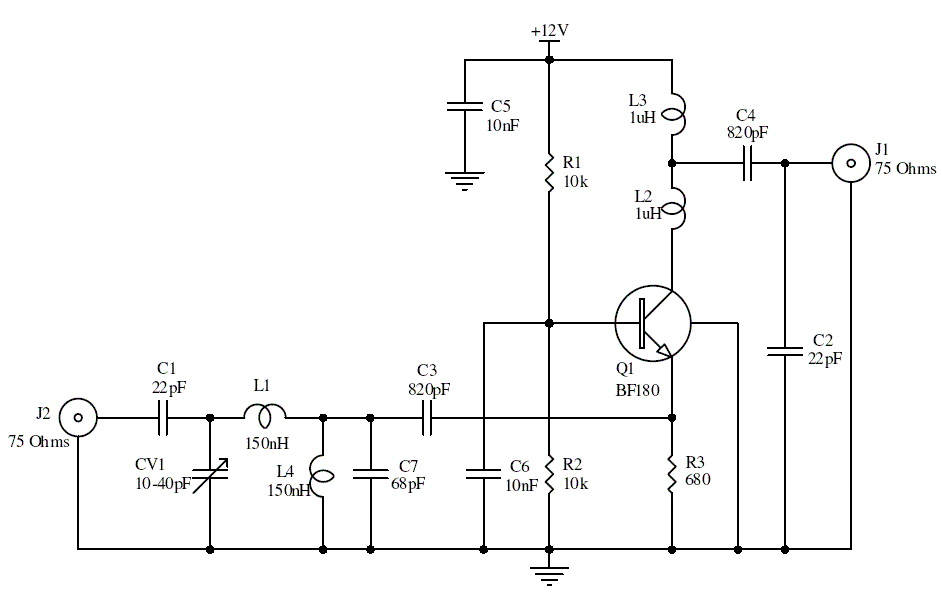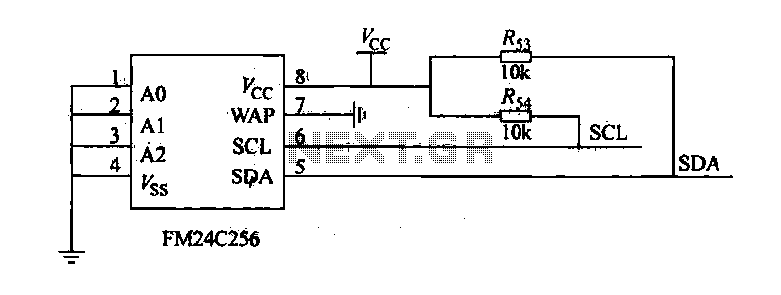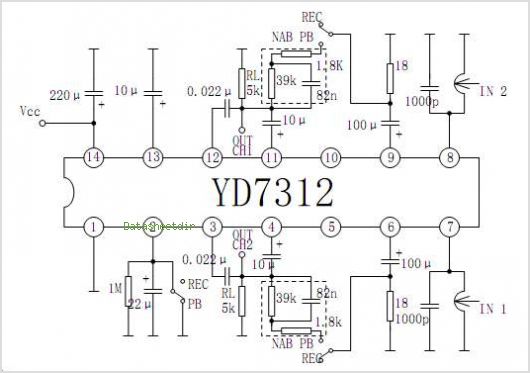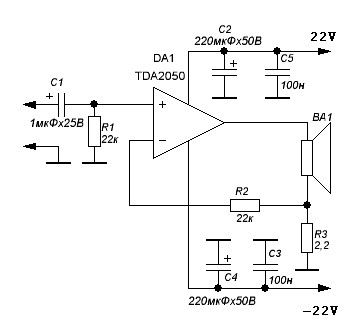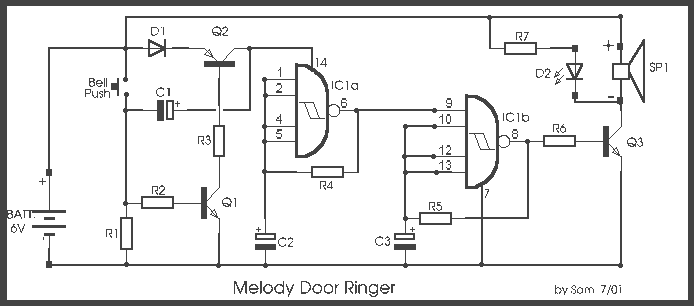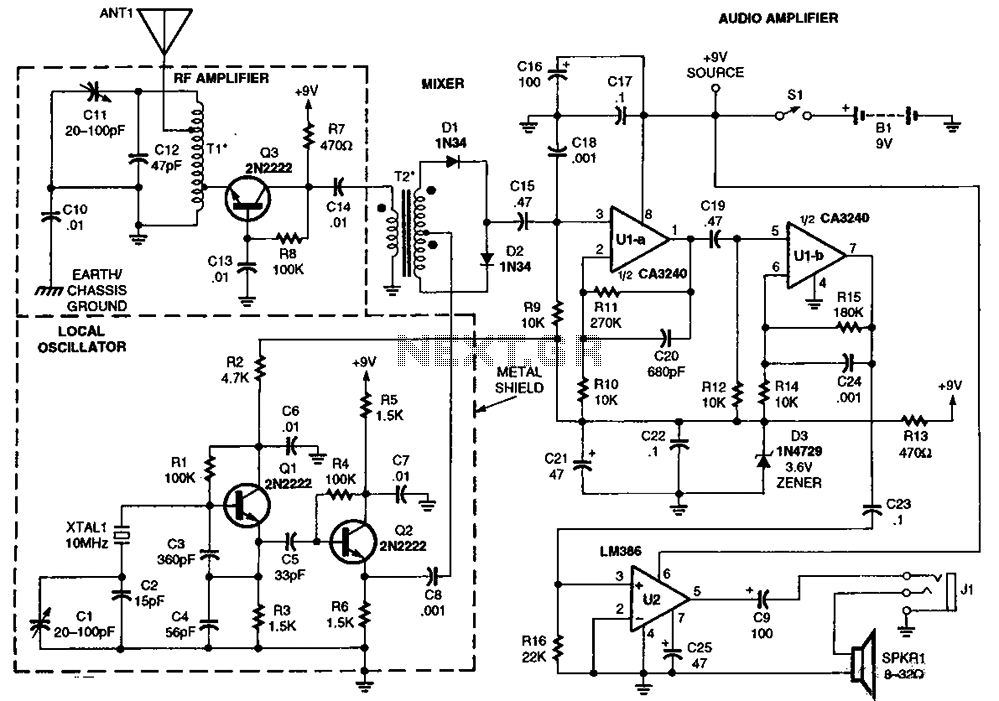
FM Antenna Amplifier Circuit
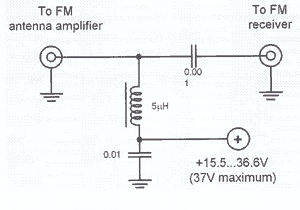
This technique eliminates the need for an additional cable to power the FM antenna amplifier. The RF signal and the DC current that supplies the amplifier utilize the same cable simultaneously. An FM antenna booster circuit diagram can be referenced for further details. However, LC filters prevent the RF signal from entering the power supply. The amplifier is compatible with both 50-ohm and 75-ohm antennas and has a gain of 25 to 30 dB. MOSFETs are employed to mitigate issues related to cross-modulation or intermodulation. The circuit is divided into two sections: the active amplifier circuit, which is typically installed close to the antenna, and the power supply circuit, which delivers current to the amplifier via the coax cable. After constructing the FM antenna amplifier circuit, the power supply should be connected. It is essential to test the DC voltage in the cable, which should range between 15.5 and 36.6 volts. Additionally, the voltage between the collector of T5 and ground should be measured while adjusting the supply voltage; it should vary from 3 to 24 volts. The emitter of T2 should read approximately 11.4 volts. If the voltage at R4 is between 0.7 and 2 volts, the MOSFET is functioning correctly.
This FM antenna amplifier design effectively integrates the power supply and RF signal transmission through a single coaxial cable, enhancing efficiency while reducing installation complexity. The active amplifier circuit, placed near the antenna, is crucial for boosting weak RF signals. The use of MOSFETs in this circuit design is significant, as these components help prevent intermodulation distortion, which can degrade signal quality.
The circuit's configuration includes LC filters that serve to isolate the RF signal from the power supply, ensuring that only the intended signals are amplified while preventing unwanted feedback that could interfere with performance. The amplifier's gain of 25 to 30 dB is suitable for improving signal strength, making it ideal for applications where signal clarity is paramount.
The power supply circuit is designed to provide a stable DC voltage to the amplifier, with specific voltage ranges that must be adhered to for optimal performance. The measurements taken during testing—such as the DC voltage in the cable and the voltage at the collector of T5—are critical for verifying that the circuit operates within the desired parameters. The specified voltage levels at various points in the circuit, such as the emitter of T2 and the resistor R4, are indicators of proper functionality. Monitoring these values ensures that the MOSFETs are operating efficiently, which is essential for maintaining the integrity of the RF signal and the overall performance of the antenna system.
Overall, this circuit design represents a sophisticated approach to enhancing FM signal reception while minimizing the complexity of installation and operation.With this technique, an extra cable to power the fm antenna amplifier is unnecessary. The RF signal and the DC current supplying the amplifier use the cable simultaneously. Check another FM antenna booster circuit diagram. The RF signal is however prevented by LC filters from flowing into the power supply. The amplifier works with either 50 ohm or 75 ohm antenna. It has a gain of 25 30 dB. MOSFETs are used to avoid the problem of crossmodulation or intermodulation. The circuit is divided into two parts. The first part is the active aplifier circuit which is normally installed very near the antenna. The second part is the power supply circuit which supplies current to the amplifier through the coax cable. After the fm antenna amplifier circuit is constructed, the power supply should be connected to it. You must then test the DC voltage in the cable. This must be between 15. 5 and 36. 6 volts. Then test the voltage between T5 collector and ground while adjusting the supply voltage. It must move from 3 to 24 volts. The emitter of T2 should be approx. 11. 4 volts. If the voltage at R4 is between 0. 7 and 2 volts, then the MOSFET is functioning properly. 🔗 External reference
This FM antenna amplifier design effectively integrates the power supply and RF signal transmission through a single coaxial cable, enhancing efficiency while reducing installation complexity. The active amplifier circuit, placed near the antenna, is crucial for boosting weak RF signals. The use of MOSFETs in this circuit design is significant, as these components help prevent intermodulation distortion, which can degrade signal quality.
The circuit's configuration includes LC filters that serve to isolate the RF signal from the power supply, ensuring that only the intended signals are amplified while preventing unwanted feedback that could interfere with performance. The amplifier's gain of 25 to 30 dB is suitable for improving signal strength, making it ideal for applications where signal clarity is paramount.
The power supply circuit is designed to provide a stable DC voltage to the amplifier, with specific voltage ranges that must be adhered to for optimal performance. The measurements taken during testing—such as the DC voltage in the cable and the voltage at the collector of T5—are critical for verifying that the circuit operates within the desired parameters. The specified voltage levels at various points in the circuit, such as the emitter of T2 and the resistor R4, are indicators of proper functionality. Monitoring these values ensures that the MOSFETs are operating efficiently, which is essential for maintaining the integrity of the RF signal and the overall performance of the antenna system.
Overall, this circuit design represents a sophisticated approach to enhancing FM signal reception while minimizing the complexity of installation and operation.With this technique, an extra cable to power the fm antenna amplifier is unnecessary. The RF signal and the DC current supplying the amplifier use the cable simultaneously. Check another FM antenna booster circuit diagram. The RF signal is however prevented by LC filters from flowing into the power supply. The amplifier works with either 50 ohm or 75 ohm antenna. It has a gain of 25 30 dB. MOSFETs are used to avoid the problem of crossmodulation or intermodulation. The circuit is divided into two parts. The first part is the active aplifier circuit which is normally installed very near the antenna. The second part is the power supply circuit which supplies current to the amplifier through the coax cable. After the fm antenna amplifier circuit is constructed, the power supply should be connected to it. You must then test the DC voltage in the cable. This must be between 15. 5 and 36. 6 volts. Then test the voltage between T5 collector and ground while adjusting the supply voltage. It must move from 3 to 24 volts. The emitter of T2 should be approx. 11. 4 volts. If the voltage at R4 is between 0. 7 and 2 volts, then the MOSFET is functioning properly. 🔗 External reference
